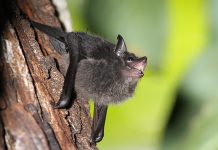Wild Monkeys Around the World – Everything You Need to Know
Monkeys are some of the most recognizable and beloved animals on earth. With their wild, playful demeanors and incredible range of species, monkeys are icons of the animal kingdom in just about every culture. For many people, monkeys evoke a sense of mystery and fascination. Many of us, if asked, “What is a monkey?” Would answer that it’s simply an animal with a long tail, but there’s actually so much more to know about monkeys.
Whether you’re curious about the fascinating behavior and habits of monkeys, want to learn more about the differences between monkey species, or just want to learn a few fun facts—this guide has all you need to know about wild monkeys around the world:
What Is a Monkey?
A monkey is an intelligent mammal of the superfamily Cercopithecoidea—characters that generally have an arboreal lifestyle and well-developed arms used for leaping and hanging onto trees—that can span in size from a small tamarin to a large baboon. Monkeys have a long and thin non-prehensile tail, used to maintain balance while climbing or to signal social or behavioral changes.
Types of Monkeys
The main types of monkeys in the world are classified into two groups: Old World Monkeys (who inhabit African and Asian forests), and New World Monkeys (who live in Central and South America).
Classification of Monkeys
Old World Monkeys
Old World Monkeys (also known as Cercopithecines) are found in Africa and Asia, and generally include baboons, mandrills, macaques, and guenons, among many others.
Biologically, Old World Monkeys are part of the Catarrhini clade and are distinguished by their narrow noses and facial features—they also have downward facing nostrils.
New World Monkeys
New World Monkeys (also known as Platyrrhines) are found in South and Central America and are further split into two smaller groups: squirrel monkeys and the spider monkey group.
Differentiated by their broader nose and facial features, New World Monkeys are part of the Platyrrhini clade and have nostrils that point outward and downward.
Common Features of Monkeys
Despite their many differences, all types of monkeys have a number of features in common. Learning about these traits can give more insight into the unique and diverse behavior of different species of monkeys.
• Tail: Most monkeys have a long, prehensile tail—which means they can hold and manipulate objects with their tails—though some, such as the Japanese macaque, have a tail that is too short and stubby to be considered prehensile.
• Body: Monkeys are warm blooded and have highly dexterous hands and feet, making them better at locomotion than other animals in the tree canopy.
• Size: There is considerable variation in monkey sizes, with some species as small as 1.2 feet (or 37 cm) in height, and the Mandrill reaching up to 90 cm tall.
• Teeth: Monkeys have 32 teeth, similar to human teeth, but including four canine teeth and multiple molars.
• Eating habits: Omnivorous, monkeys mostly feed on fruits, nuts, leaves and flowers, although some species eat insects, eggs and even mammals as part of their diet.
• Social behavior: Monkeys are highly social and live in groups called troops, that can number up to 500 individuals in some species.
Fun Facts about Monkeys
• Certain monkey species have the most complex muscle system in the animal kingdom, allowing them to make facial expressions similar to humans.
• Some varieties of Old World Monkeys have unusually large noses.
• The Baboon is the longest living monkey, capable of living up to 45 years.
• Monkeys usually move quadrupedally (on all fours) along branches in trees, but some have adapted to walk on just two legs.
• Monkeys play a big role in some cultures, and may be taken in as pets, guard animals or even used as helpers.
• Monkeys are known for their playful behavior, with some having even been observed swinging from trees and participating in activities such as tag and hide-and-seek.
Where to Spot Wild Monkeys
Most species of monkeys can be found in tropical climates, especially those with dense forest ecosystems.
In Africa, primates like baboons, guenons, vervet monkeys and macaques can be spotted in countries like Tanzania, along with many other species of monkey.
India is home to primates like macaques, langurs and rhesus monkeys, which can be found in jungle regions like the Eastern and Western Ghats, as well as parts of the Himalayas.
In Central and South America, tropical jungles are home to native species such as capuchin monkeys, spider monkeys and howler monkeys. Popular parks like Corcovado National Park in Costa Rica are populated with over 35 types of primates.
Best Practices for Interacting with Wild Monkeys
Due to their inquisitive nature, it’s natural to want to observe or even interact with wild monkeys, but they should always be viewed from a safe distance.
• Do not attempt to touch or feed an animal in the wild.
• Do not corner an animal; rather, provide an escape route if an animal appears stressed.
• Refrain from making loud noise or sudden movements—these can trigger defensive behaviors in primates.
• While observing, keep your distance; try to stay about 30 feet away.
• Most importantly, never try to bring a wild monkey home; it is illegal and dangerous for both you and the animal.
The Takeaway
Monkeys are some of the most beloved animals on the planet. Whether enjoying their presence from afar, or exploring their natural habitats, it’s important to respect the wildlife and keep in mind that they’re wild animals, no matter how familiar they may seem.
The diverse and distinctive characteristics of different species of monkeys make them a captivating and important subject to learn about in the animal kingdom. From their similarities and differences in behavior, size, and environment, to their playful, curious disposition, wild monkeys are an awe-inspiring reminder of the beauty and complexity of nature.














